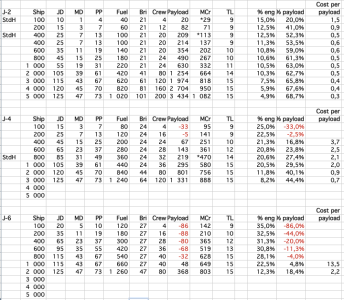To maintain compatibility with the extant setting to date and not require a universe in a shower moment.
But it's not really necessary.
As long as you can describe the old ship in the new system, it's all good.
Things like price and combat stats and such like that are, quite honestly, moot.
The combat GAME is already not a balanced system, as that's not its role. It was never really used in such a manner.
HG tried that with the competitions, showing the the holes in that system.
So, having some LBB 2 design that gave an extra +1 against some mechanic that doesn't work in the new system -- not a crushing moment.
What that may mean is that a ship munchkined in the new system may have advantages over one that leveraged the old system, and the old ship won't perform as well. It's a "bad design" in the new system, in terms of combat.
But, again, it's not a combat game. Its an RPG with combat. Combat has always been about narrative.
Hands, who here has killed a party with a "ship destroyed" result after some errant encounter with a pirate. Anyone?
"oops...ouch...10...well, that's it..y'all are dead. Who wants to watch GoT?"
That's lousy gameplay.
But what about the ship costing too much or too little? Well, again, trying to balance costs against a contrived, unbalanced trade game economy, is pretty folly. Even the trading game is about narrative. Everyone knows how abjectly terrible of an actual system it is when you try to scale it in any direction. Arguably, it's an "ok" system, IF you're just flying a box stock Free Trader. Outside of that, it's off the rails.
So, what difference does it make?
Can you describe a 200 ton starship with a "Trader" sticker on the side? Can you describe a 100 ton ship with "Scout" on the side?
Look at TNE, it has Traders. It has Scouts. They're appropriately sized, and they work!
It's fair to argue that "if you can make a usable Jump 2 100 ton ship, then the design system is broken" and that's a valid benchmark.
Outside of that, pretty much anything goes.
If you want my 10 cents on a LBB2+ its percent drives, armor, and the high energy weapons (plasema, fusion, PAs) from HG.
But I really think simplifying TNE/T4 design/BL/BR is the way. It has everything everyone seems to want.
I think someone could make a drive table out of percent style drives to make the math easier.

